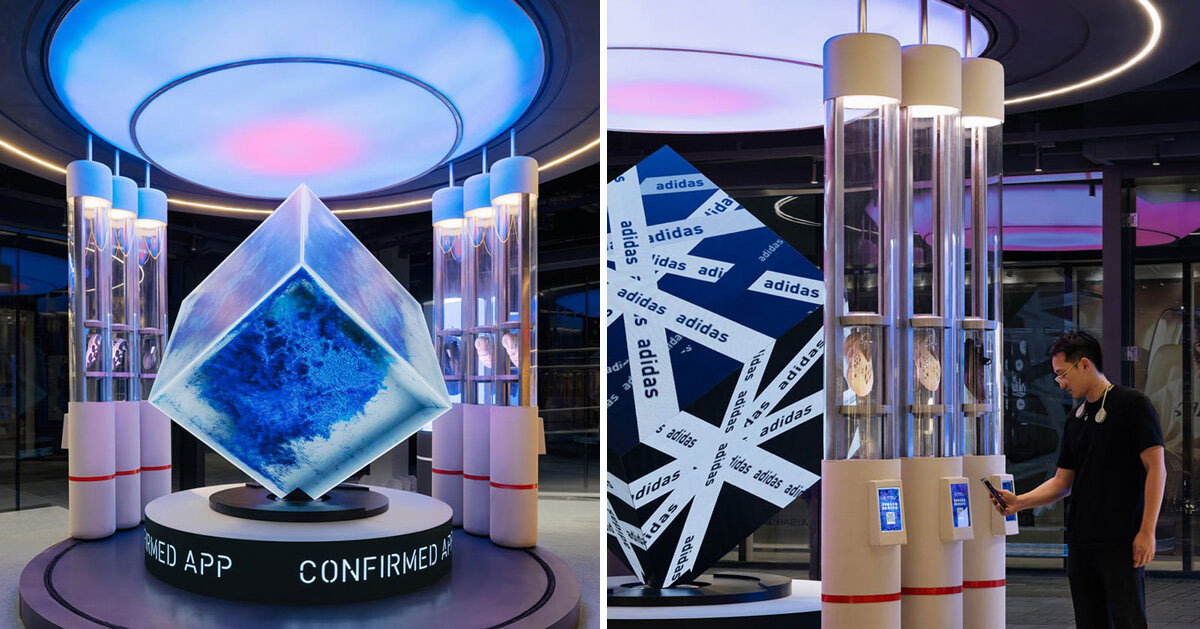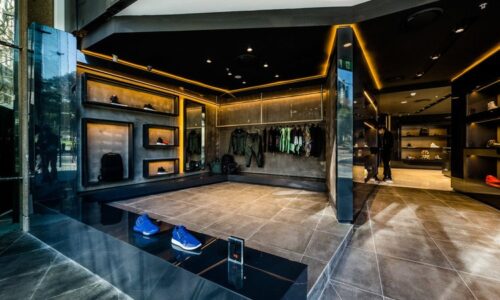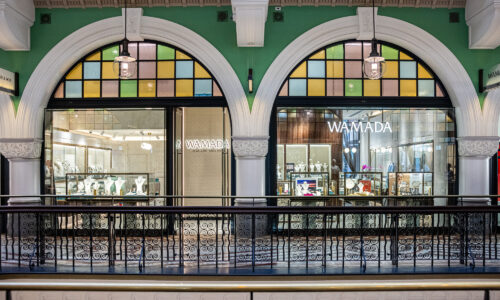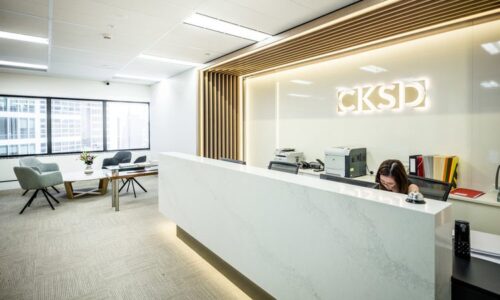In retail, art has always been used to shape a brand’s key aesthetics, deliver non-verbal messages and transform the customer – all of which encourage them to visit a store and shop.
Now, however, a new category of art is emerging, tech-driven art, called “generative art”, poised to become the next big thing in retail design, revolutionising the customer journey.
Big brands such as Bulgari, H&M and Adidas are leading the way in using generative art in-store, designing environments that are captivating, inviting and “sharable”.
But how exactly does it work, why is is so exciting for retailers, artists & customers, and what does this all mean for retail?

What is Generative Art?
Generative art is not about an artist’s inner creativity, but rather, it is a collaboration between the computer and the artist, using algorithms to create unique works.
It is a subset of AI technology and it enables artists (and brands) to build innovative and hyper-personalized experiences which increase customer immersion in the retail space.
The impact of Generative Art in store
Here are some of the top reasons why generative art is an effective medium for customer engagement:
1. Generative Art provides Personalised Experiences
Personalisation allows brands to create experiences tailored to individual customers. According to a recent study, 60% of consumers said they would become repeat customers if they had had a personalised shopping experience.
Generative art is great for this – using customer movements or biometric data, generative art can create personalised experiences.
A great example of this is with H&M in their flagship store in London.
H&M worked with design agency Hirsh & Mann to create a large-scale generative artwork that evolves in response to customer movements.
As customers travel on escalators between the ground floor and first floor of H&M’s store, the constantly evolving, generative artwork interacts with customers – evolving and changing in line with the time of day, seasonal campaigns and can now be updated in line with upcoming collections.
The artwork is huge, displayed on 4,200 x 3536 pixels of 2.5mm LED, engaging not only the customers on the escalators but everyone in the store.
2. Generative Art provides Stimulation
Art (from temporary art installations to using art in the whole store) makes any store more attractive. However, Generative art offers more – it is often unexpected & novel and this can provide a break from the mundane shopping experience. It also often stimulates all senses incorporating sound, touch and even smell and in this way, retailers can create a truly immersive experience.
3.Generative Art provides Social Interaction
Generative art has been shown to produce share-worthy Instagrammable shopping experiences – customers share via social media which increases foot traffic and sales online.
Adidas’s installation in its flagship store in Beijing is a good example of this share-worthy art.

Adidas and design partner YSP leveraged generative art and AI to create an interactive installation where shoppers could design their own sneakers in real time. Customers scanned their feet and the AI software generated a custom sneaker design based on their biometric data.
Customers could adjust the design, choosing their own colours, designs and other details. Then, their shoes were sent to an on-site factory for production. Customers encouraged to take photos and share their designs on social media, creating a buzz around the brand and driving more traffic to the physical; store.
Last words
Increasingly customers want a store to be more than a place to shop. This means brands must broaden their mission, creating experiences that are enriching and have an impact.
Generative art is one direction that can provide this – creating true human interaction in-store.


